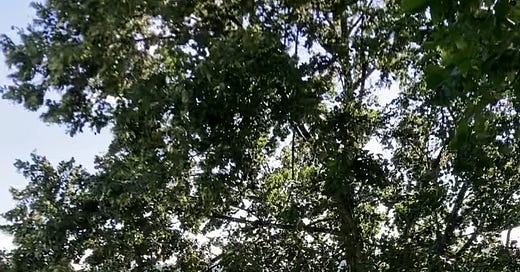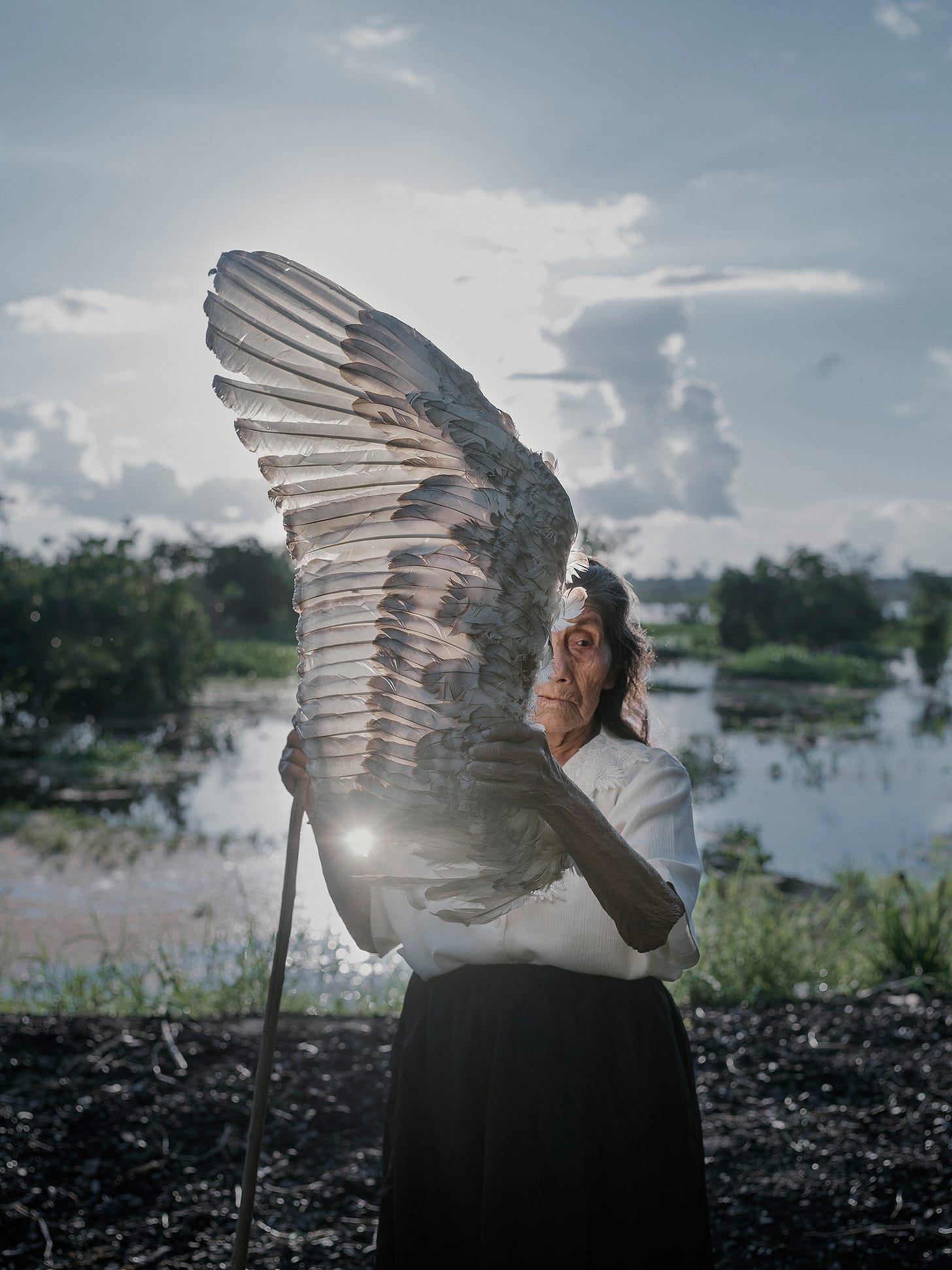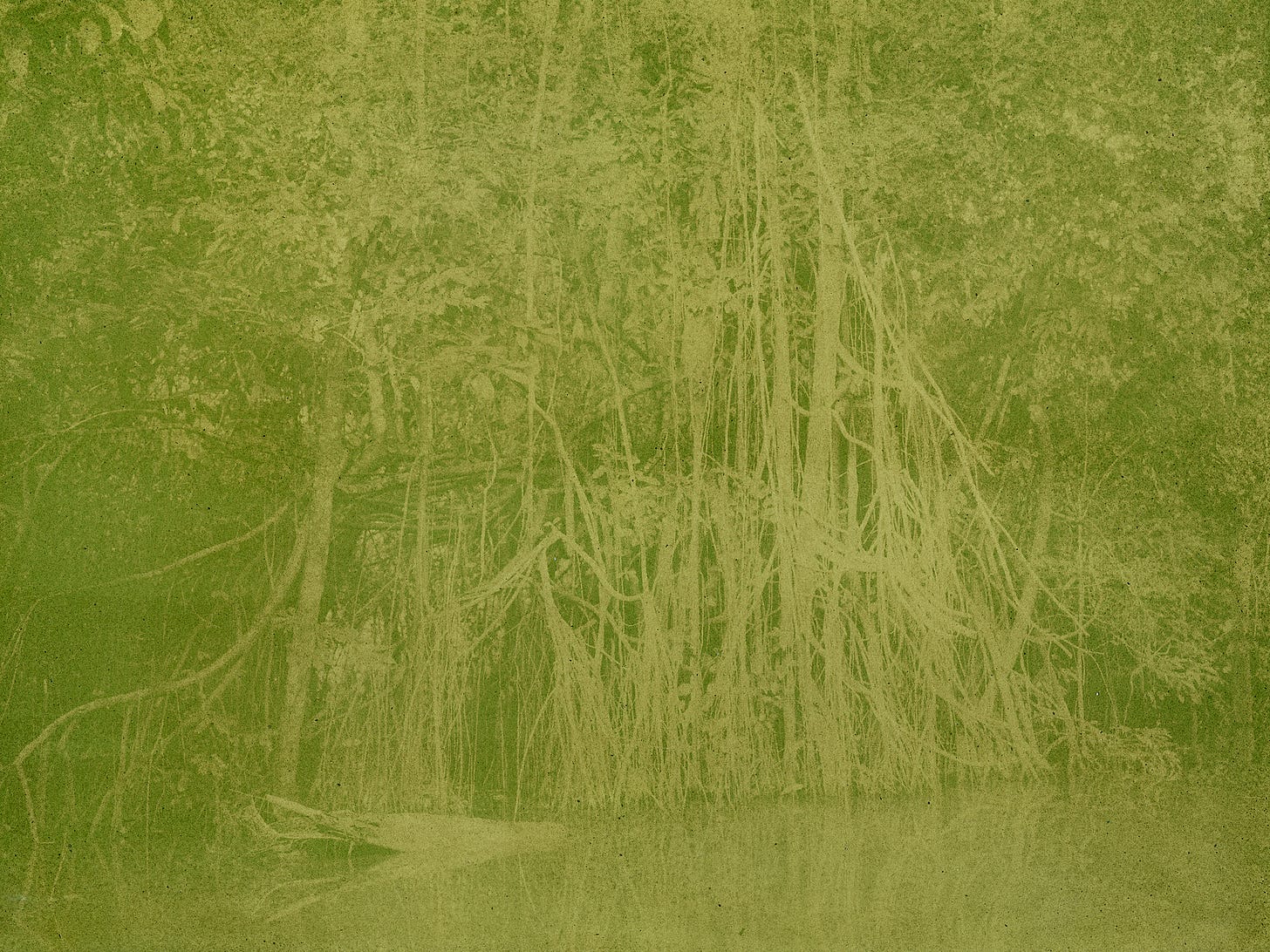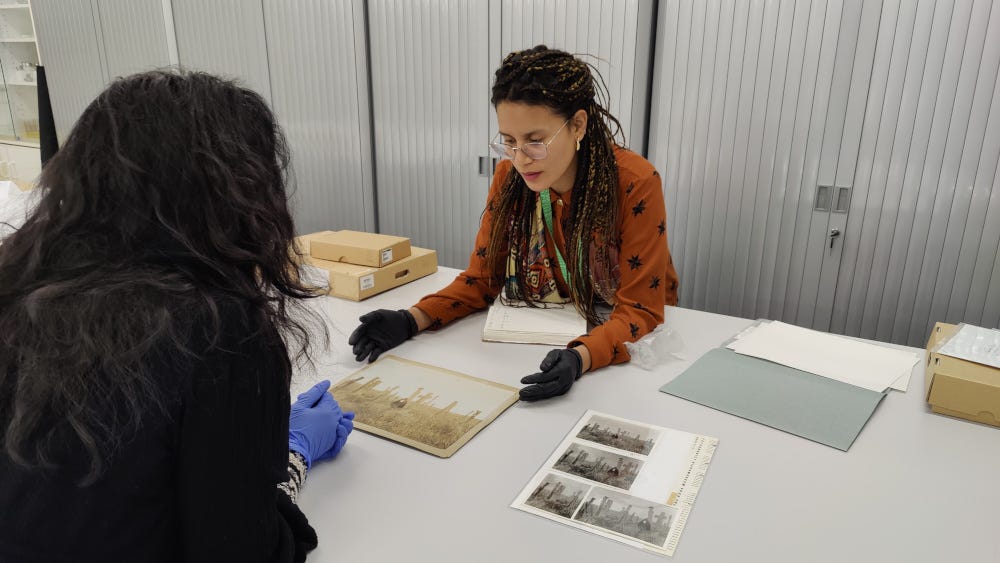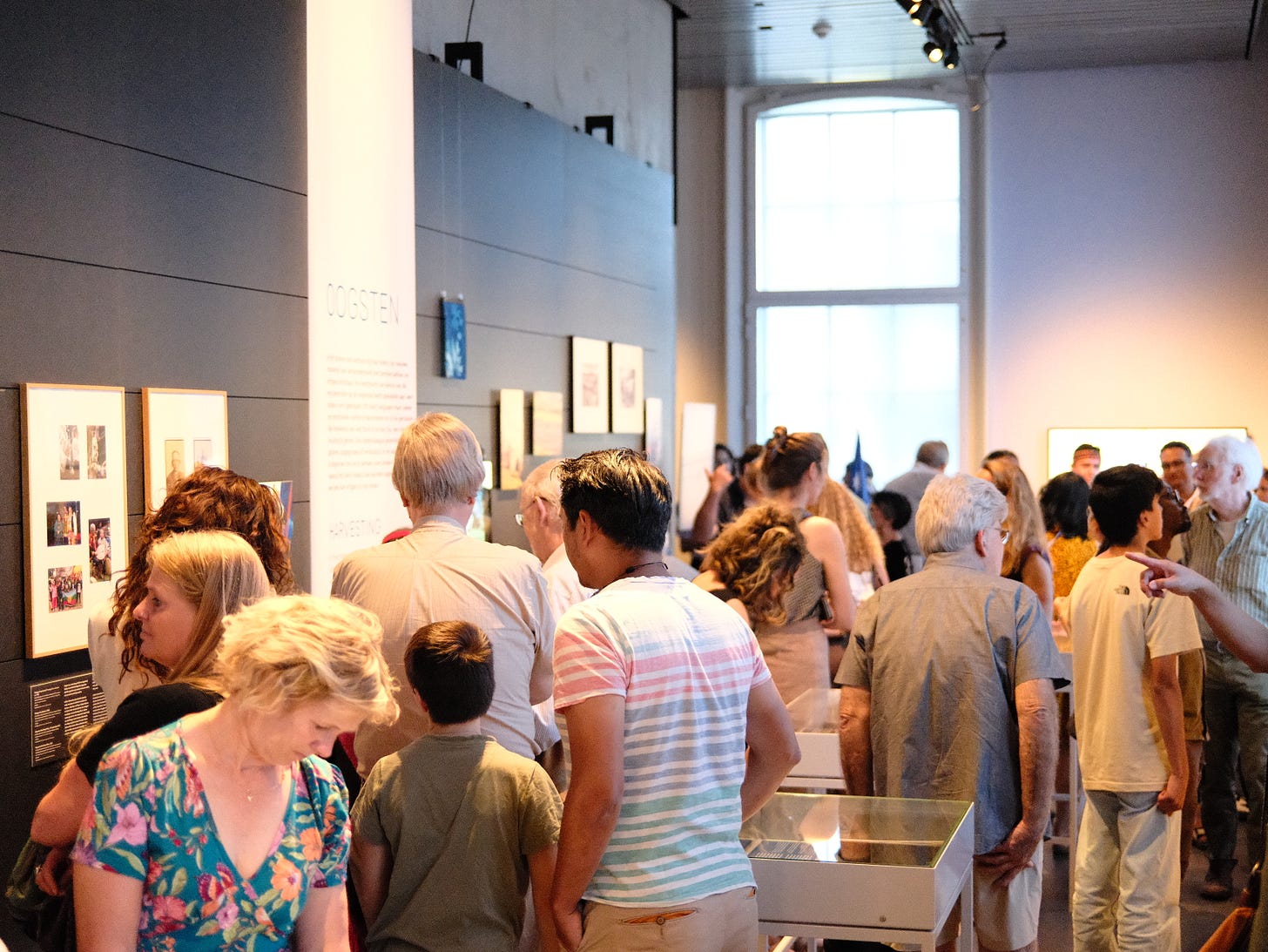Welcome to dear midnight, my bi-weekly newsletter with reflections on all things photography, publishing and the artistic process.
Writing this newsletter has become a welcome exercise for reflecting on the materials that cross my desk while working on personal projects or Foam Magazine. Thank you for reading along, I hope you’ll find it inspiring! Please do feel free to share this with someone that would enjoy the read.
I can’t think of anything more soothing than lying underneath a tree, submerged in its flickering shade, watching leaves tremble and sway to the rhythm of a gentle breeze. Last weekend, to unwind after a few restless weeks of travelling, I made my way to our family’s old farmhouse in the German countryside to do precisely that under ‘my tree’. The farmland is nestled within the Weser Hills and has been home to the Hundertmark’s for over 400 years, throughout which it became tradition to plant trees or name existing ones after family members.
Literally connecting our family with the place, these trees put down roots which entangle our stories with the land. Usually outliving their eponyms, they grow into knobbly creatures, like ‘Opa’s tree’, reminding us of those that came before. In 1992, the year I was born, my parents planted a lime tree in my name. Lying here I can’t help think about the play of light and shadow, exposing over decades the trace of ghosts on the ground.
1: Ghosts
Earlier this year I stumbled across a small publication by Yann Gross and Arguiñe Escandón titled Aya, and published by Editorial RM in 2019. The two artists traced the footsteps of Charles Kroehle, a nineteenth-century photographer who is mostly known for the images he took in the Amazon, and who supposedly died after being wounded by an arrow aimed at his camera. In this project Gross and Escandón bring his contested anthropological archive into dialogue with images captured while immersing themselves in the forest of what is now known as Peru.
In an essay published by Aperture Emmanuel Iduma wrote ‘They traveled along the Pachitea, Ucayali, and Nanay Rivers, living among the Ashaninka, Shipibo-Conibo, and Cocama peoples, who must fight for the guarantee and acceleration of communal land titling, based on their rights of self-determination, and for alternative development plans that respect existing ecosystems. Escandón and Gross are rightly ambivalent about Kroehle and Hübner, who were complicit in more than one form of colonial exploitation, working with rubber barons, fur traders, and gold diggers.’
The images, filled with symbolism, tell us about their encounters, both with people and nature, while relating to the power of plants. Whether used for healing or spiritual rituals, plants seem to take on a special role in this work, as carriers of ancient knowledge and connection to the land. One section of the book for example is dedicated to five photosensitive plants, as described by Hercule Florence, which suggest that photographic techniques could have been known in the Amazon for a long time.
By making a light-sensitive emulsion with pigments extracted in liquid form from tree leaves, Escandón and Gross developed a process of analogue photography and made contact prints in their improvised laboratory. Aya means ghost, soul or spirit in the Quichua language, and I feel intrigued to think about these plant-based images as attempts to capture the spirit of the land in a more ethereal way.
ghost is the soul or spirit of a dead person or non-human that is believed to be able to appear to the living
In many cases the history of photography still haunts the contemporary framing of Indigenous people, which is often rooted in the visual tropes and exoticization we see in the images of Kroehle & Co. Alternative ways and collaborative processes are needed, and in that sense the book stimulates important questions about the representation of people and land - especially when captured through the Western gaze.
2: Foye
A new exhibition titled Mapuche: A people in motion which opened at Wereldmuseum Leiden this weekend, takes the debate around Indigenous representation to the next level. Rather than positioning the conversation within the context of the colonial archive only, this display adds the voices of contemporary Mapuche artists, including Paula Baeza Pailamilla, Yazminne Pérez and Leuliñ Chávez Painemilla, who search for ways to speak about their heritage through the lens of the diaspora.
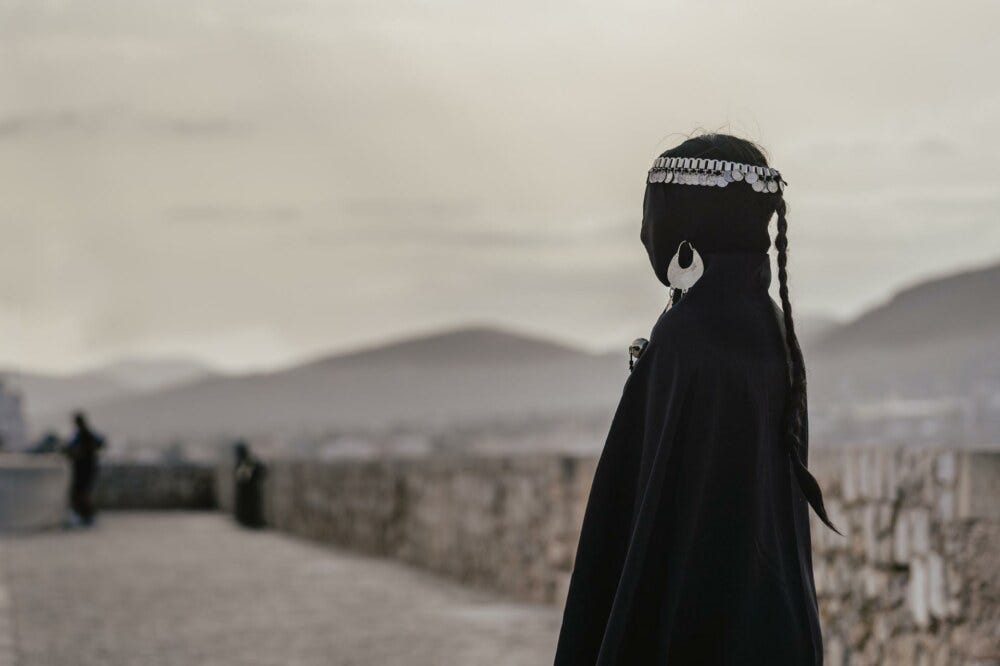
Created in collaboration with FOLIL, the Mapuche Foundation of The Netherlands, the exhibition is structured around three themes: spreading, sowing and harvesting, planting at its core the idea of transformation and resistance. The works attest to the migration routes that many were forced to take since the 1970s when Pinochet’s military dictatorship forced Mapuche people into exile. I met with curator Valeria Posada-Villada who shared some valuable insights into the stories and collaborations that shaped the exhibition.
KH: How did your collaboration with FOLIL begin?
VPV: It all started with an invitation to look together at a series of photographs from the Wereldmuseum Leiden’s collection that were taken in what we now know as Chile and Argentina. Through conversations, we began weaving connections between these photographs, the life stories of Mapuche migrants like them and also artists who have settled in Europe.

VPV: We started by looking at carte du visite images and ended with this albumen print by a Canadian photographer called Obder Heffer. What you see here are chemamülls, which translated means wooden person, standing as representation of those deceased. In the 19th century many of them were stolen to be taken as ethnographic objects, and through the christianisation of many Mapuche, crosses started to replace chemamülls in the graveyards over time. You can already spot some crosses in this albumen print.
When looking at this print, the FOLIL founders immediately thought of the tradition in connection to their father, the first person in the Lautaro community to be buried once again with their own chemamüll, marking a revival, a circle. It was an emotional moment for us all, and also marked the starting point of a generational dialogue.
KH: How does this cross-generational dialogue manifest in the exhibition?
VPV: It manifests itself in the combination of different historical times and types of photography. For example, during my research in the museum’s collection I came across a series of portraits that caught my attention, because some of their descriptions included the following phrase: ‘photographed and died in the museum of La Plata’. After doing some research on the collector of these photographs, Herman Ten Kate Jr., I confirmed that the portrayed people were taken as prisoners during the colonisation campaigns of the Patagonia and Tierra del Fuego. They were later transferred to the museum in Buenos Aires to ‘provide knowledge’ about communities like the Mapuche, but also Aónikenk, Yámana or Selk’nam. Really heavy to digest. Presenting these images alone felt insufficient (even disrespectful) so I started to look for artists, people who have found ways to intervene these images and came across the work of Yazminne Pérez.

VPV: Pérez is an artist from Trelew, Patagonia and since 2019 she has been intervening with these images through weaving. Some have textile patterns that relate to the Mapuche weaving style, some are more like her own interpretation. Originally she did this in collaboration with GUIAS, a collective of anthropologists working to identify the portrayed people which had been imprisoned. Since then she continues to host workshops with high-schools students, wishing to raise awareness on this historical matter with the younger generations. Sometimes she also inserts text, so for example this one says seguimos resistiendo,’we keep on resisiting’. Not only does it give a new life to the images, but it also connects them with the present fight for recognition of the Mapuche people.
“The Mapuche people came from blue; not any old blue but the colour of the east, where the moon and the sun rise” - Elicura Chihuailaf
KH: How did the cyanotypes come to be?
VPV: I was looking for something that would visually represent Mapuche migrants. Coming across a text on water access and local plants - such as Araucarias and Foyes - in Mapuche settlements, the image of a cyanotype popped up in my mind. Cyanotype because blue is a colour with symbolic power for the Mapuche and also because of its link with plants. FOLIL felt drawn to the idea immediately so we decided to go to the Hortus botanical garden in Amsterdam and create a cyanotype with one of the Foye plants there. It felt like such a joyous moment, but also like an embodiment of their place here in The Netherlands and Europe.
foye is the sacred tree of the Mapuche, who associate it with good, peace and justice, often planted in special gatherings
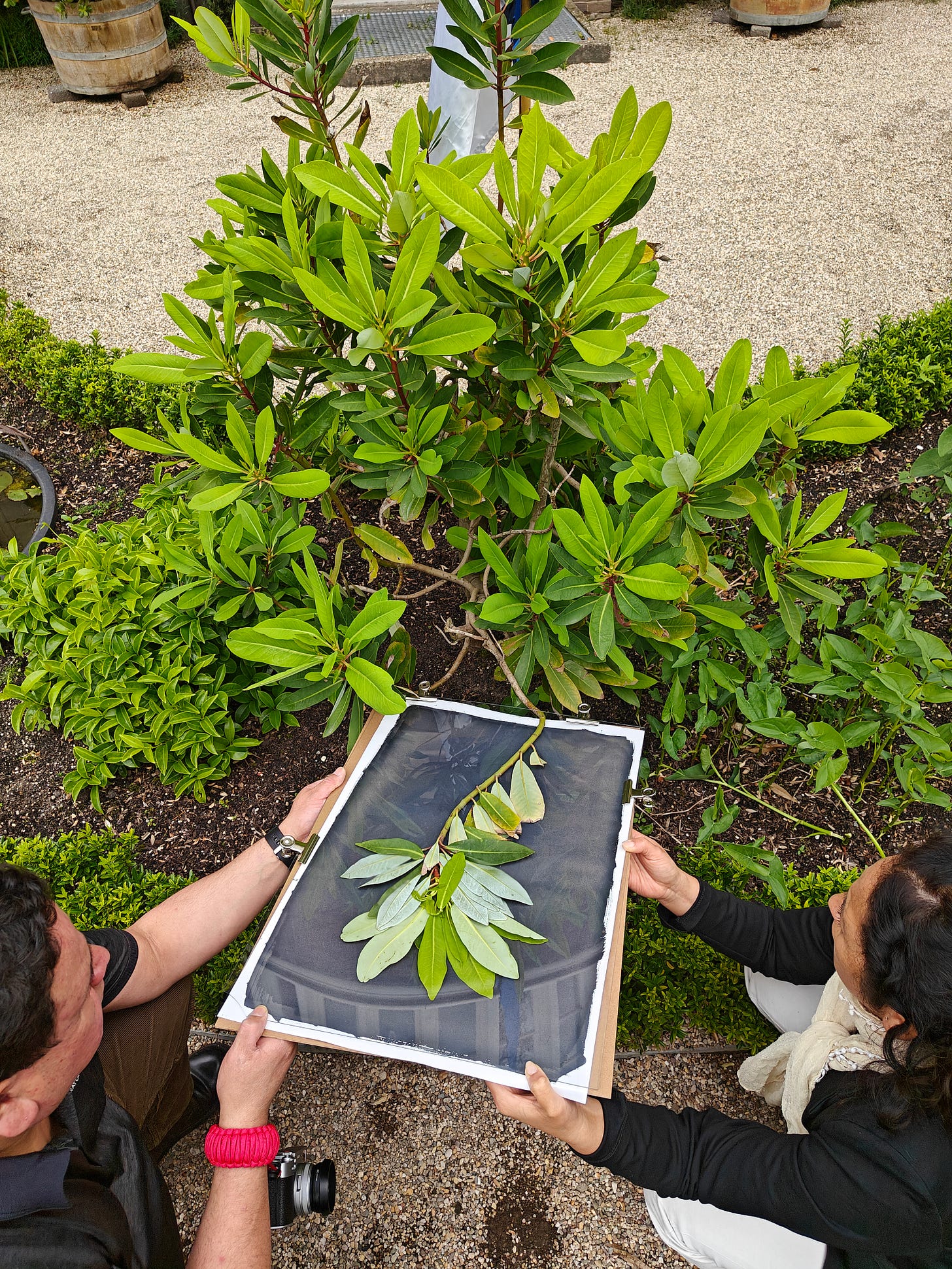
VPV: In Mapudungun language Mapu means land and Che means person. Here in the exhibition, each one has given their answer to the question of how to be Mapuche in the diaspora. Some say it’s not possible because of the lack of connection to the land, others say yes, because land does not necessarily need to be understood geographically, but more emotionally.
KH: That is very poetic, basically the cyanotype represents their inner Mapu?
VPV: Yes, and how the Foye has travelled with them to Europe. We also find it very powerful as a symbol.
KH: As a curator how did you channel the confrontations with these contested histories into such an empowering manifestation?
VPV: Seeing as it’s impossible to speak for everyone and gather everyone’s account, it was important for us to show the diversity of different viewpoints. You deal with the frustration that there are identities you will not uncover, histories you will never know and therefore it’s about not only staying within the archival dead-end, but thinking: how can this be really relevant for our present? How can it be in service for the communities it came from? That makes for really demanding but beautiful work, it asks of us to be much more creative.
KH: Thank you Valeria! The exhibition will be open until July 2025, so if any readers happen to be in the area feel free to go by Wereldmuseum Leiden or check their website for upcoming events.
If you’ve read this far, thank you and I hope you enjoyed! My next letter will reach you at midnight somewhere around August 3rd. Aiming at the Saturday night, but sometimes things take a bit longer. Until then, take care.
x


